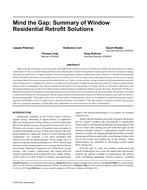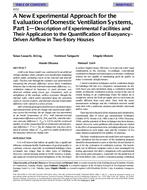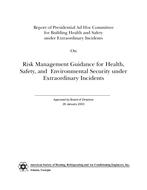Click here to purchase
Simple analysis of the thermodynamics of the refrigeration cycle suggests that lowering the condenser pressure should result in decreased compressor energy and that the lowest possible pressure is constrained by the temperature of the available heat sink (usually the ambient condition). Thus optimization of the condenser pressure seems straight-forward. However, in practice there is a more complex trade-off, as lowering condenser pressure increases the condenser fan energy. The trade-off is particularly acute when variable speed drives are used to control the condenser fans. In addition, there can be other constraints such as expansion valve performance. This paper demonstrates how the theoretical optimal condensing temperature can be defined using a mathematical model that takes into account the characteristics of the condenser, the condenser controls, the refrigeration load, and the ambient temperature. The model is used to explore practical condenser pressure control strategies for a year of operation of a case study refrigerated warehouse facility. The strategies were the optimum defined by the model and alternative control strategies including fixed head pressure set-point, minimum approach to the ambient temperature, and fixed condenser fan speed. The alternative controls are much simpler to implement and often the penalty relative to the optimum strategy is small.
Citation: 2019 Winter Conference, Atlanta, GA, Conference Papers
Product Details
- Published:
- 2019
- Number of Pages:
- 9
- Units of Measure:
- Dual
- File Size:
- 1 file , 3.7 MB
- Product Code(s):
- D-AT-19-C066


